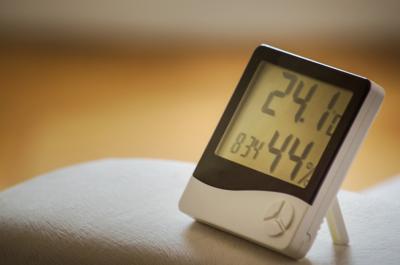If you've got more than one child, putting them together in a single bedroom can be tempting. Sometimes this is because you lack space, such as a two-bedroom home accommodating a family of four, or simply because your little ones like sharing a bedroom!
But at some point, you'll come to the question that likely crosses every parent's mind with more than one child - what age should siblings stop sharing a room? Here, we look at the pros and cons and what the law says about children having their own space.

What age should siblings stop sharing a room?
Section 325-326 of the Housing Act 1985 states that a household may be considered overcrowded if children of the opposite sex over the age of 10 are made to share a room. If you're curious about how many children should share a bedroom, the legislation also states that up to two children should share a room regularly!
It's important to note that it's not illegal for children over 10 to share a bedroom. Instead, according to the NSPCC, this legislation ensures everyone's home is safe and comfortable - including children, biological siblings or step-siblings!
As children grow up and enter their preteen years, many recognise a need for more privacy. It's at around this age, once they start entering double digits that you should consider providing them with their own space.
This is particularly important for siblings of different genders! Puberty is a confusing time, and it can be stressful even if they have room. With the average age of girls starting puberty being 11 and boys being 12, it's understandable that siblings of different genders will want higher privacy levels than a shared room accommodates.
So, we recommend giving each child their own bedroom to make life less stressful and keep them comfortable and happy!

What are the advantages of sharing a room?
Under the age of 10, there are many benefits of children sharing a bedroom, including:
- It teaches children how to share
- It fosters a close sibling bond
- Fewer rooms are required, meaning families can share smaller homes
- They’ll never get lonely
- They'll have support nearby if they fear the dark

What are the disadvantages of sharing a room?
Of course, there are also some drawbacks to sharing a room, which include:
- Younger siblings may disturb older siblings with noise
- Different daily routines may see one sibling disturb the other’s sleep
- Squabbles can be common
- A lack of privacy
- Germs spread quicker, so siblings will likely pass illnesses to each other
- Space is limited should your child like a friend to sleep over
- Mess and clutter become more concentrated in one space
- Brother and sister might disagree on how they want the room to look or feel

How to maximise a shared space
For some families, it's not a case of whether siblings will share a bedroom but more a case of 'how can we make the most of the space we have?'. This is even more important nowadays, with a survey in 2022 finding that the average house size in the UK has decreased by 16%, so making the most of a smaller space is crucial!
Luckily, we've got plenty of tips on maximising a shared space for siblings that will keep them happy for years to come! Check out our best tips now.
1. The classic bunk bed
Bunk beds are the tried and true solution to siblings sharing a bedroom, with many of us having experienced this classic kids' bed in our childhoods. They're fantastic at saving on space, as they provide two beds that only take up the floor space of a single bed. This means that both children can sleep comfortably, and, as an added benefit, bunk beds come with plenty of safety benefits, including top rails that prevent anyone from falling!
Whilst you might be thinking of the classic wooden bunk bed - yes, we do have those - bunk beds of the 21st century are often a little fancier than that. We've got triple bunk beds that have not two but three bunks to work with. Alternatively, we have triple bunk beds with a double bed on the bottom and a single on the top!
2. Two single beds
If you have the space in your children's bedroom, why not consider two single beds? Placing a single bed on each side of the room could allow your children to have their 'own' space, letting them decorate one half of their bedroom to their liking whilst their sibling can decorate the other half!
Two single beds are a great choice if your children are too afraid to climb into a bunk bed or just prefer to be able to sleep with their sibling in sight. Many of our single kids' beds offer innovative storage, such as our cabin beds or mid-sleepers with built-in drawers, shelves and even desks. This will let them personalise their space and provide plenty of room to store away their toys and clothes to keep their bedroom tidy.

















